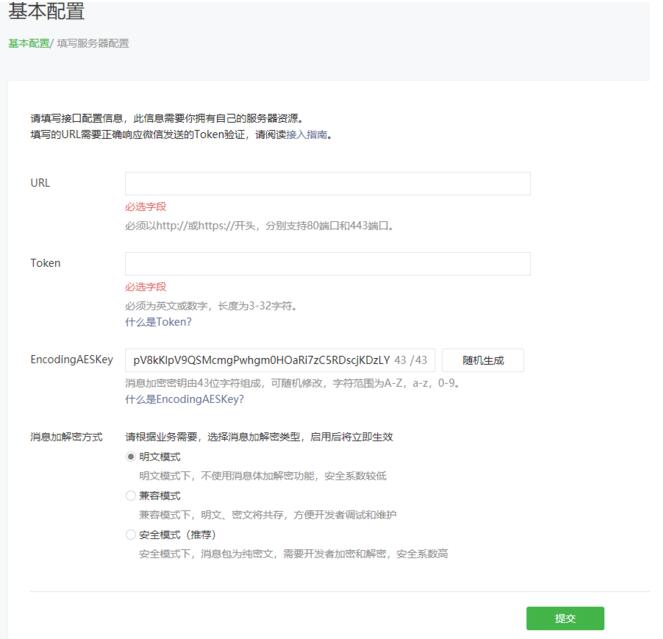Python的Flask开发框架简单上手笔记
最简单的hello world
#!/usr/bin/env python
# encoding: utf-8
from flask import Flask
app = Flask(__name__)
@app.route('/')
def index():
return 'hello world'
if __name__ == '__main__':
app.run(debug=True)
#app.run(host='127.0.0.1', port=8000)
之后,访问http://localhost:5000
支持post/get提交
@app.route('/', methods=['GET', 'POST'])
多个url指向
@app.route('/')
@app.route('/index')
不管post/get使用统一的接收
from flask import request
args = request.args if request.method == 'GET' else request.form
a = args.get('a', 'default')
处理json请求
request的header中
"Content-Type": "application/json"
处理时:
data = request.get_json(silent=False)
获取post提交中的checkbox
{%for page in pages %}
<tr><td><input type=checkbox name=do_delete value="{{ page['id'] }}"></td><td>
{%endfor%}
page_ids = request.form.getlist("do_delete")
使用url中的参数
@app.route('/query/<qid>/')
def query(qid):
pass
在request开始结束dosomething
一般可以处理数据库连接等等
from flask import g app = ..... @app.before_request def before_request(): g.session = create_session() @app.teardown_request def teardown_request(exception): g.session.close()
注册Jinja2模板中使用的过滤器
@app.template_filter('reverse')
def reverse_filter(s):
return s[::-1]
或者
def reverse_filter(s): return s[::-1] app.jinja_env.filters['reverse'] = reverse_filter
可以这么用
def a():...
def b():...
FIL = {'a': a, 'b':b}
app.jinja_env.filters.update(FIL)
注册Jinja2模板中使用的全局变量
JINJA2_GLOBALS = {'MEDIA_PREFIX': '/media/'}
app.jinja_env.globals.update(JINJA2_GLOBALS)
定义应用使用的template和static目录
app = Flask(__name__, template_folder=settings.TEMPLATE_FOLDER, static_folder = settings.STATIC_PATH)
使用Blueprint
from flask import Blueprint
bp_test = Blueprint('test', __name__)
#bp_test = Blueprint('test', __name__, url_prefix='/abc')
@bp_test.route('/')
--------
from xxx import bp_test
app = Flask(__name__)
app.register_blueprint(bp_test)
实例:
bp_video = Blueprint('video', __name__, url_prefix='/kw_news/video')
@bp_video.route('/search/category/', methods=['POST', 'GET'])
#注意这种情况下Blueprint中url_prefix不能以 '/' 结尾, 否则404
使用session
包装cookie实现的,没有session id
app.secret_key = 'PS#yio`%_!((f_or(%)))s'
然后
from flask import session
session['somekey'] = 1
session.pop('logged_in', None)
session.clear()
#过期时间,通过cookie实现的
from datetime import timedelta
session.permanent = True
app.permanent_session_lifetime = timedelta(minutes=5)
反向路由
from flask import url_for, render_template
@app.route("/")
def home():
login_uri = url_for("login", next=url_for("home"))
return render_template("home.html", **locals())
上传文件
<form action="/image/upload/" method="post" enctype="multipart/form-data"> <input type="file" name="upload" />
接收
f = request.files.get('upload')
img_data = f.read()
直接返回某个文件
return send_file(settings.TEMPLATE_FOLDER + 'tweet/tweet_list.html')
请求重定向
flask.redirect(location, code=302) the redirect status code. defaults to 302.Supported codes are 301, 302, 303, 305, and 307. 300 is not supported.
@app.route('/')
def hello():
return redirect(url_for('foo'))
@app.route('/foo')
def foo():
return'Hello Foo!'
获取用户真实ip
从request.headers获取
real_ip = request.headers.get('X-Real-Ip', request.remote_addr)
或者, 使用werkzeug的middleware 文档
from werkzeug.contrib.fixers import ProxyFix
app.wsgi_app = ProxyFix(app.wsgi_app)
return json & jsonp
import json
from flask import jsonify, Response, json
data = [] # or others
return jsonify(ok=True, data=data)
jsonp_callback = request.args.get('callback', '')
if jsonp_callback:
return Response(
"%s(%s);" % (jsonp_callback, json.dumps({'ok': True, 'data':data})),
mimetype="text/javascript"
)
return ok_jsonify(data)
配置读取方法
# create our little application :)
app = Flask(__name__)
# Load default config and override config from an environment variable
app.config.update(dict(
DATABASE='/tmp/flaskr.db',
DEBUG=True,
SECRET_KEY='development key',
USERNAME='admin',
PASSWORD='default'
))
app.config.from_envvar('FLASKR_SETTINGS', silent=True)
------------------
# configuration
DATABASE = '/tmp/minitwit.db'
PER_PAGE = 30
DEBUG = True
SECRET_KEY = 'development key'
# create our little application :)
app = Flask(__name__)
app.config.from_object(__name__)
app.config.from_envvar('MINITWIT_SETTINGS', silent=True)
几个不常用的方法
from flask import abort, flash
abort
if not session.get('logged_in'):
abort(401)
flash
flash('New entry was successfully posted')
异步调用
想在flask的一个请求中处理异步, 除了使用消息系统, 可以用简单的线程处理
from threading import Thread
def async(f):
def wrapper(*args, **kwargs):
thr = Thread(target=f, args=args, kwargs=kwargs)
thr.start()
return wrapper
@async
def dosomething(call_args):
print call_args
in a request handler, call `dosomething`
error handler
@app.errorhandler(404)
def not_found_error(error):
return render_template('404.html'), 404
@app.errorhandler(500)
def internal_error(error):
db.session.rollback()
return render_template('500.html'), 500
项目配置
1.直接
app.config['HOST']='xxx.a.com'
print app.config.get('HOST')
2.环境变量
export MyAppConfig=/path/to/settings.cfg
app.config.from_envvar('MyAppConfig')
3.对象
class Config(object):
DEBUG = False
TESTING = False
DATABASE_URI = 'sqlite://:memory:'
class ProductionConfig(Config):
DATABASE_URI = 'mysql://user@localhost/foo'
app.config.from_object(ProductionConfig)
print app.config.get('DATABASE_URI') # mysql://user@localhost/foo
4.文件
# default_config.py
HOST = 'localhost'
PORT = 5000
DEBUG = True
app.config.from_pyfile('default_config.py')
EG. 一个create_app方法
from flask import Flask, g
def create_app(debug=settings.DEBUG):
app = Flask(__name__,
template_folder=settings.TEMPLATE_FOLDER,
static_folder=settings.STATIC_FOLDER)
app.register_blueprint(bp_test)
app.jinja_env.globals.update(JINJA2_GLOBALS)
app.jinja_env.filters.update(JINJA2_FILTERS)
app.secret_key = 'PO+_)(*&678OUIJKKO#%_!(((%)))'
@app.before_request
def before_request():
g.xxx = ... #do some thing
@app.teardown_request
def teardown_request(exception):
g.xxx = ... #do some thing
return app
app = create_app(settings.DEBUG)
host=settings.SERVER_IP
port=settings.SERVER_PORT
app.run(host=host, port=port)
change log:
2013-09-09 create
2014-10-25 update
